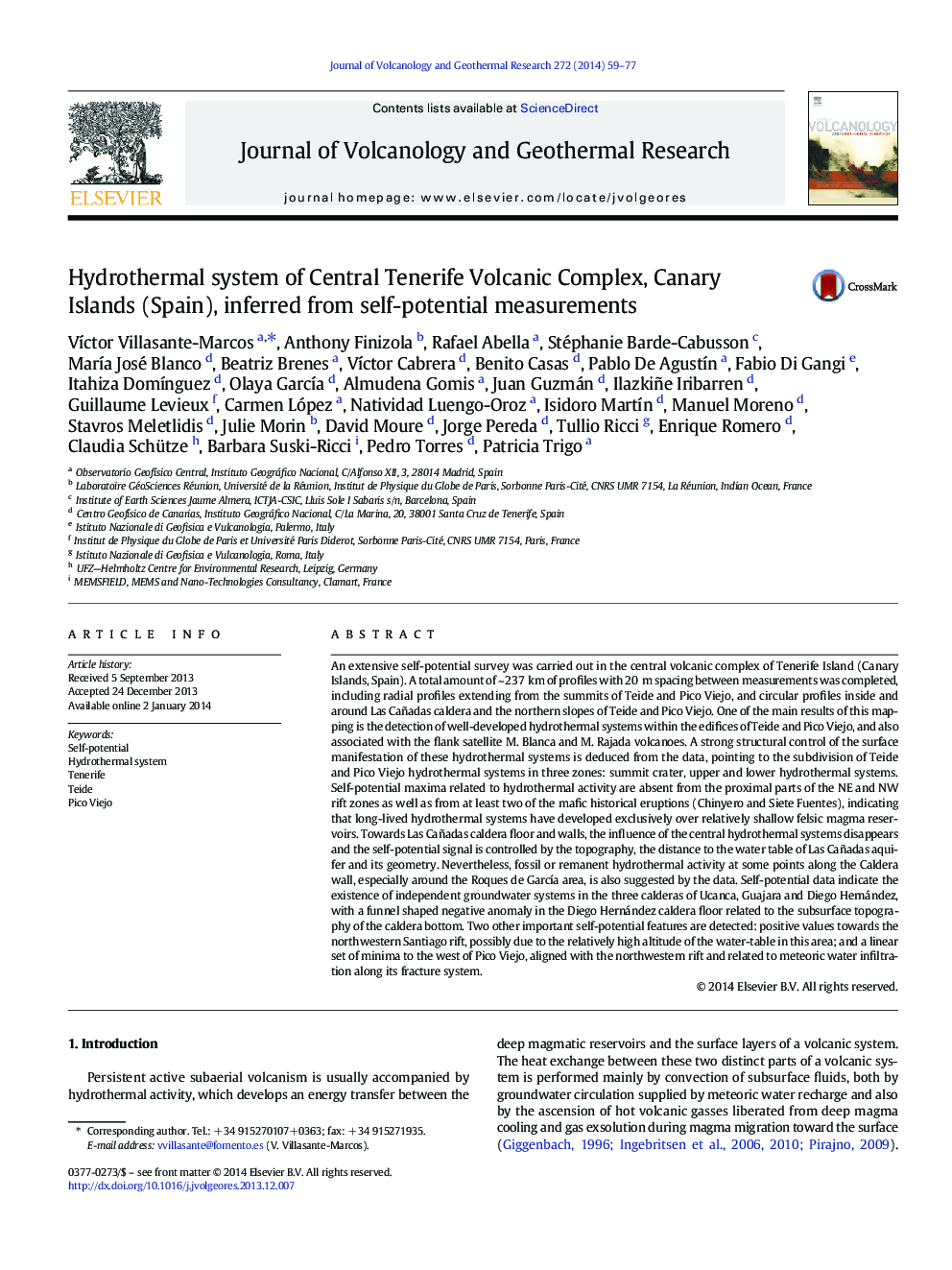| کد مقاله | کد نشریه | سال انتشار | مقاله انگلیسی | نسخه تمام متن |
|---|---|---|---|---|
| 4712412 | 1638349 | 2014 | 19 صفحه PDF | دانلود رایگان |
• Characterization of hydrothermal systems in central Tenerife by self-potential
• Long-lived hydrothermalism exclusively over shallow felsic magma reservoirs
• Fossil hydrothermal activity at some points along Las Cañadas caldera wall
• Independent groundwater systems in Ucanca, Guajara and Diego Hernández calderas
• Diego Hernández groundwater system geometry reveals an almost closed caldera.
An extensive self-potential survey was carried out in the central volcanic complex of Tenerife Island (Canary Islands, Spain). A total amount of ~ 237 km of profiles with 20 m spacing between measurements was completed, including radial profiles extending from the summits of Teide and Pico Viejo, and circular profiles inside and around Las Cañadas caldera and the northern slopes of Teide and Pico Viejo. One of the main results of this mapping is the detection of well-developed hydrothermal systems within the edifices of Teide and Pico Viejo, and also associated with the flank satellite M. Blanca and M. Rajada volcanoes. A strong structural control of the surface manifestation of these hydrothermal systems is deduced from the data, pointing to the subdivision of Teide and Pico Viejo hydrothermal systems in three zones: summit crater, upper and lower hydrothermal systems. Self-potential maxima related to hydrothermal activity are absent from the proximal parts of the NE and NW rift zones as well as from at least two of the mafic historical eruptions (Chinyero and Siete Fuentes), indicating that long-lived hydrothermal systems have developed exclusively over relatively shallow felsic magma reservoirs. Towards Las Cañadas caldera floor and walls, the influence of the central hydrothermal systems disappears and the self-potential signal is controlled by the topography, the distance to the water table of Las Cañadas aquifer and its geometry. Nevertheless, fossil or remanent hydrothermal activity at some points along the Caldera wall, especially around the Roques de García area, is also suggested by the data. Self-potential data indicate the existence of independent groundwater systems in the three calderas of Ucanca, Guajara and Diego Hernández, with a funnel shaped negative anomaly in the Diego Hernández caldera floor related to the subsurface topography of the caldera bottom. Two other important self-potential features are detected: positive values towards the northwestern Santiago rift, possibly due to the relatively high altitude of the water-table in this area; and a linear set of minima to the west of Pico Viejo, aligned with the northwestern rift and related to meteoric water infiltration along its fracture system.
Journal: Journal of Volcanology and Geothermal Research - Volume 272, 15 February 2014, Pages 59–77
